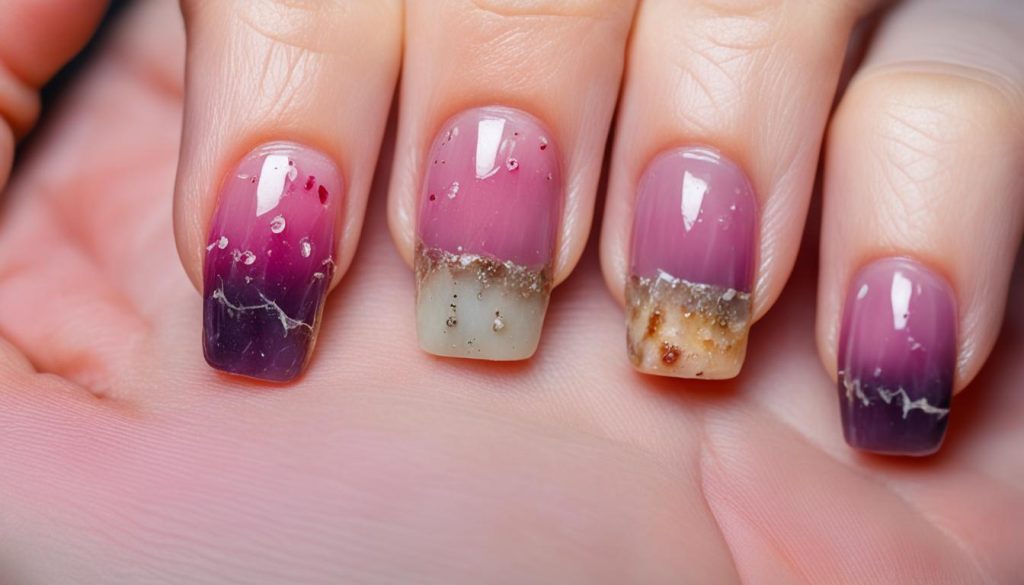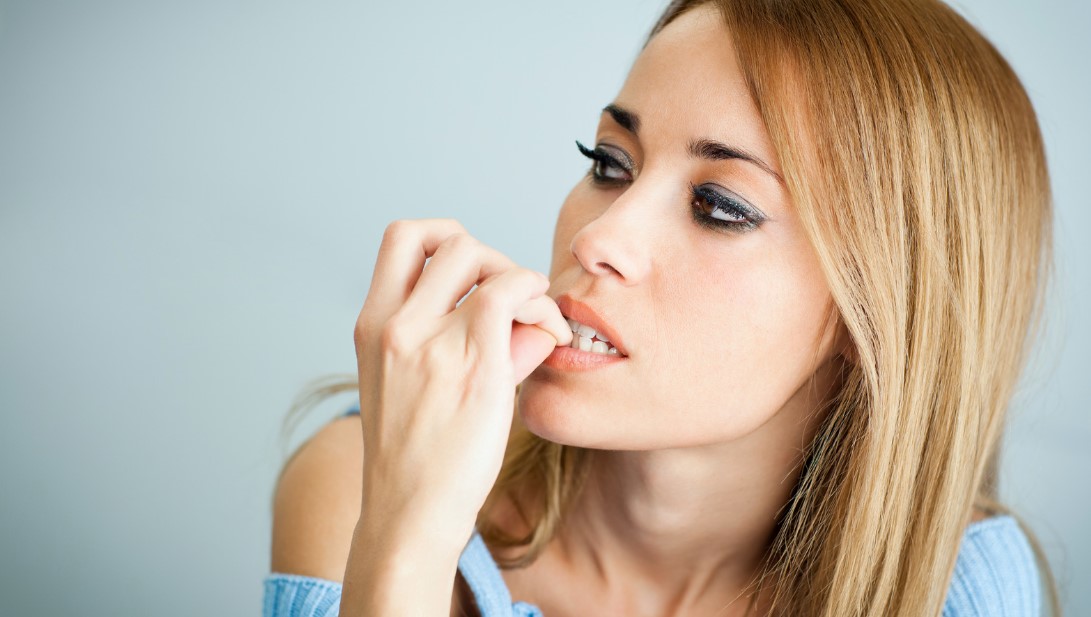Nail biting is a common habit that can be difficult to break. It falls under the category of body-focused repetitive disorders (BFRDs), which are behaviours that can cause harm when done frequently. Nail biting may be triggered by sensory, cognitive, motor, or setting triggers. It can lead to the transmission of germs and increase the risk of infections. Additionally, nail biting can cause damage to the nail bed and teeth.
The American Academy of Dermatology Association (AADA) provides various strategies to help individuals stop biting their nails. By identifying triggers, keeping nails short, and taking a gradual approach, it is possible to break the nail-biting cycle. It’s also important to note that nail biting may be a sign of emotional or psychological distress, and seeking help from a healthcare provider is recommended.
Breaking the nail-biting habit is essential for maintaining healthy nails. By following these nail-biting remedies and prevention techniques, individuals can overcome nail-biting and achieve long-term success. It’s time to kick the habit and enjoy beautiful, bite-free nails.
Reasons People Bite Their Nails
Nail biting is a behavior that can be triggered by various factors. It is classified as a body-focused repetitive disorder (BFRD). Common triggers for nail biting include sensory triggers, cognitive triggers, motor triggers, and setting triggers. These triggers can vary from person to person. Nail biting may also be associated with underlying emotional or psychological conditions. Understanding the reasons behind nail biting can help individuals develop effective strategies to overcome the habit.
Onychophagia, which is the medical term for nail biting, can be a way for individuals to cope with stress or anxiety. Some people engage in this habit as a way to release tension or alleviate boredom. In some cases, nail biting may be a learned behavior, as individuals may observe others around them engaging in the habit.
Additionally, sensory triggers such as rough or uneven nails, hangnails, or irregular nail surfaces can prompt individuals to bite their nails. Cognitive triggers, such as deep concentration or deep thought, can also lead to nail biting as a subconscious habit. Motor triggers, such as fidgeting or restlessness, may result in individuals resorting to nail biting as a form of self-soothing.
The setting in which individuals find themselves can also be a trigger for nail biting. Stressful or anxiety-inducing environments, such as work deadlines or social situations, can contribute to the urge to bite nails. Emotional or psychological conditions such as anxiety disorders, obsessive-compulsive disorder (OCD), or attention-deficit/hyperactivity disorder (ADHD) can also play a role in the development and persistence of nail biting.
Triggers for Nail Biting
| Sensory Triggers | Cognitive Triggers | Motor Triggers | Setting Triggers |
|---|---|---|---|
| Irregular nail surfaces | Deep concentration | Fidgeting or restlessness | Stressful environments |
| Rough or uneven nails | Deep thought | Anxiety-inducing situations | |
| Hangnails | Social gatherings |
By understanding the triggers for nail biting, individuals can identify their own specific triggers and develop tailored strategies to address them. Breaking the cycle of nail biting can involve a combination of self-awareness, stress management techniques, and seeking professional help if needed. Overcoming the habit of nail biting can contribute to improved nail health and overall well-being.

The Consequences of Nail Biting
Nail biting can have several negative consequences on your nails and overall oral health. It is important to be aware of these consequences in order to understand the potential risks and motivate yourself to quit the habit.
Damage to Nail Bed
One of the consequences of nail biting is the damage it can cause to the nail bed. When you bite your nails, you may cause trauma to the delicate skin and tissue at the base of the nail. This can result in redness, swelling, and even bleeding. Over time, repeated nail biting can lead to deformities in the nail bed, causing the nails to grow in an abnormal and unsightly manner.
Risk of Infections
Biting the nails creates openings for bacteria and fungi to enter, increasing the risk of infections. The mouth carries a variety of bacteria, and when you introduce these bacteria to the already vulnerable skin around your nails, it can lead to painful and unsightly infections. Fungal infections such as nail fungus (onychomycosis) may also occur, causing the nails to become discolored, thickened, and brittle.
Impact on Teeth
In addition to the damage it can cause to your nails, nail biting can also have a negative impact on your teeth. Constantly biting your nails can exert pressure on the front teeth, potentially leading to chips, cracks, or breaks. Over time, this habit can even contribute to teeth misalignment or jaw problems, such as temporomandibular disorders (TMD).
To visualize the consequences of nail biting, take a look at the image below:

It is clear that nail biting can have detrimental effects on both your nails and teeth. Taking steps to break the habit is essential for maintaining healthy nails and preserving your oral health.
How to Stop Biting Nails?
Breaking the nail biting habit can be challenging, but there are various effective strategies that can help individuals overcome this habit. By implementing these techniques, you can take control of the urge to bite your nails and achieve healthier, stronger nails.
1. Keep Your Nails Short
Trimming your nails regularly can help minimize the temptation to bite. Short nails are less noticeable and provide fewer opportunities for biting. Keep a nail clipper or file handy to maintain your nails at a desired length.
2. Identify Your Triggers
Awareness of what triggers your nail biting can help you develop strategies to avoid or manage them. It could be stress, boredom, or other emotional factors. Once you identify your triggers, you can find alternative coping mechanisms or stress management techniques to replace the habit of biting your nails.
3. Take a Gradual Approach
Quitting nail biting doesn’t have to happen overnight. Focus on stopping one nail at a time. By gradually reducing the number of nails you bite, you’ll make progress towards quitting the habit entirely. Celebrate each small success to stay motivated.
4. Seek Professional Help
If you find it difficult to quit biting your nails on your own, consider seeking help from a healthcare provider or dermatologist. They can provide guidance and suggest onychophagia treatments tailored to your individual needs, especially if nail biting is linked to underlying emotional or psychological distress.
5. Use Bitter Nail Polish
Bitter nail polish is a popular deterrent for nail biters. It has a bitter taste that discourages biting. Apply the nail polish regularly and reapply as necessary. Over time, the association between nail biting and an unpleasant taste can diminish the habit.
6. Wear Gloves
Wearing gloves prevents direct access to your nails and acts as a physical barrier. Whenever you feel the urge to bite, put on gloves to make it more difficult to engage in the habit. This can help break the cycle of nail biting.
7. Find Alternative Activities
Redirecting the habit of nail biting towards more positive activities can be highly effective. Keep fidget toys or stress management techniques, such as stress balls or mindfulness exercises, on hand to occupy your hands and mind when the urge to bite arises.
8. Practice Relaxation Techniques
Nail biting is often associated with stress or anxiety. Engaging in relaxation techniques like deep breathing, meditation, or yoga can help you manage stress levels and reduce the likelihood of resorting to nail biting as a coping mechanism.
9. Establish a Regular Manicure Routine
Treating yourself to a regular manicure can be a motivating factor for quitting nail biting. Keeping your nails well-groomed and polished can make you more conscious of their appearance and less likely to bite. Consider scheduling regular manicure appointments or maintaining a DIY manicure routine at home.
10. Try Nail Strengthening Treatments
Weakened nails may be more prone to breakage, which can worsen the nail biting habit. Using nail strengthening treatments, such as strengthening base coats or nail serums, can help improve the condition of your nails and reduce the need to bite.
By implementing a combination of these strategies, you can gradually overcome the nail biting habit and achieve healthy, beautiful nails.

| Strategies | Benefits |
|---|---|
| 1. Keep Your Nails Short | – Decreases visibility |
| 2. Identify Your Triggers | – Helps develop coping mechanisms |
| 3. Take a Gradual Approach | – Provides achievable milestones |
| 4. Seek Professional Help | – Tailored treatments and guidance |
| 5. Use Bitter Nail Polish | – Creates a deterrent |
| 6. Wear Gloves | – Acts as a physical barrier |
| 7. Find Alternative Activities | – Redirects the habit |
| 8. Practice Relaxation Techniques | – Reduces stress-induced biting |
| 9. Establish a Regular Manicure Routine | – Enhances nail awareness |
| 10. Try Nail Strengthening Treatments | – Prevents breakage |
Conclusion
Breaking the nail biting habit takes time and effort, but it is possible. By implementing strategies to identify triggers, seeking professional help, and using techniques like bitter nail polish and wearing gloves, individuals can gradually stop biting their nails. Prioritizing healthy nails and consistently practicing these strategies is key to permanently stopping nail biting. Remember that everyone’s journey may vary, so finding the approach that works best for you is crucial in overcoming the habit and maintaining healthy nails for good.

